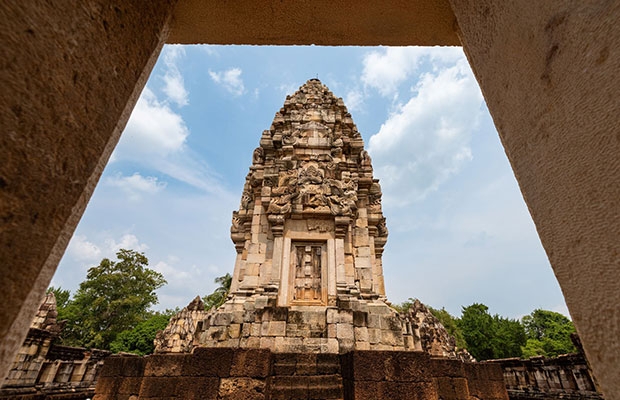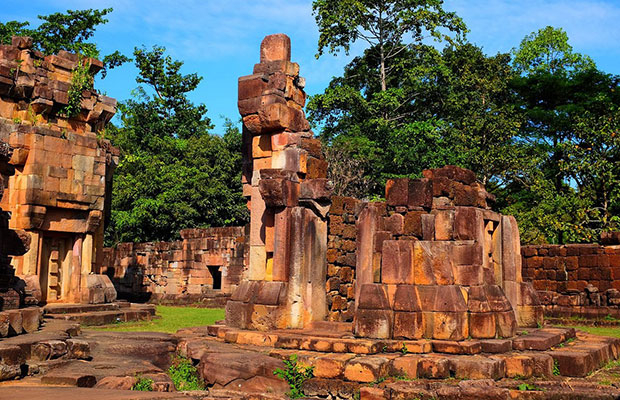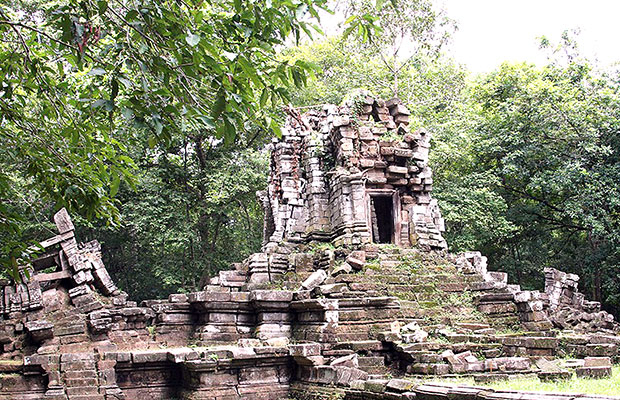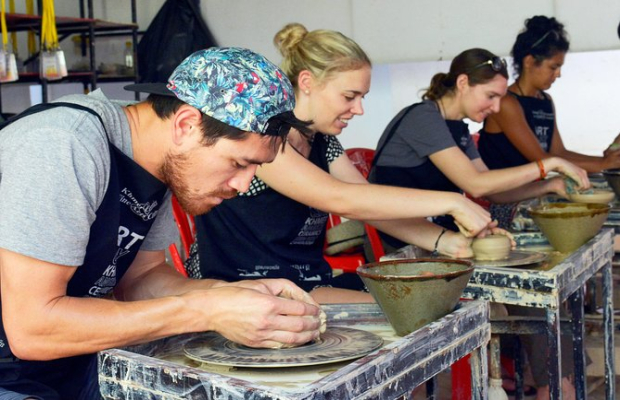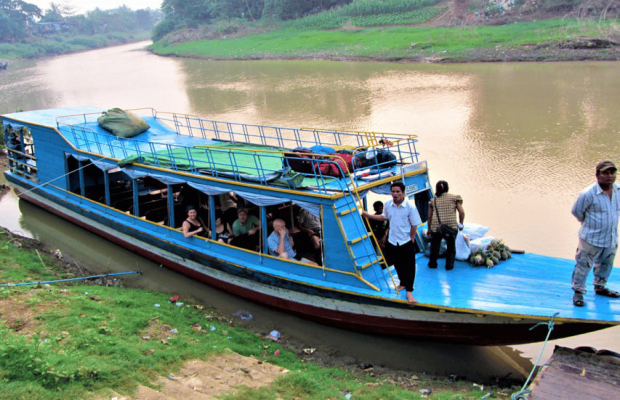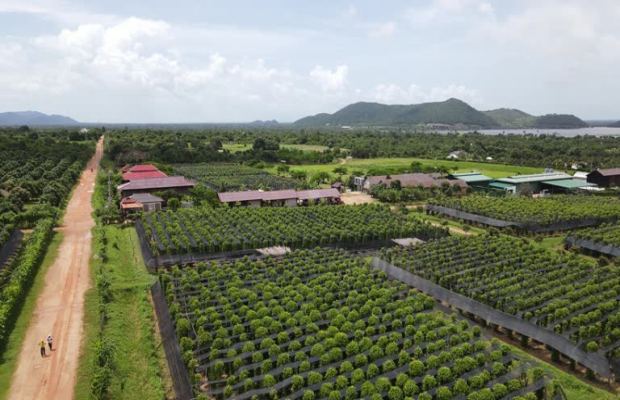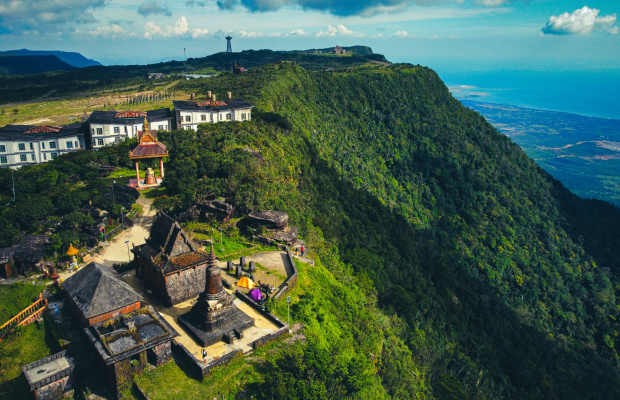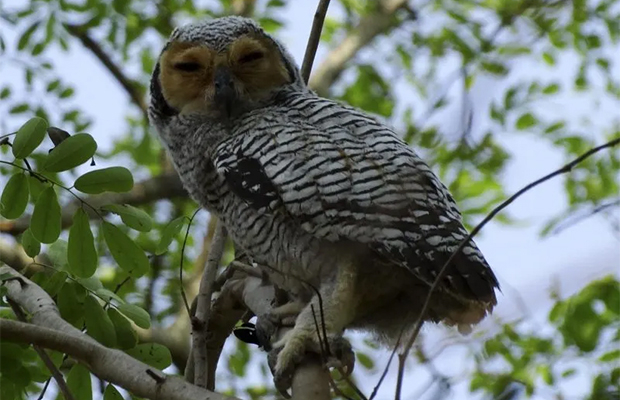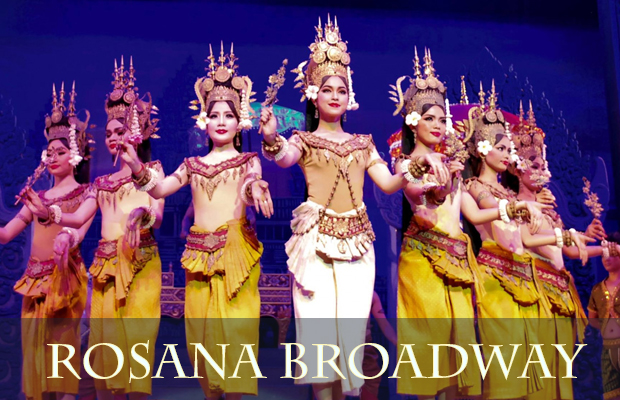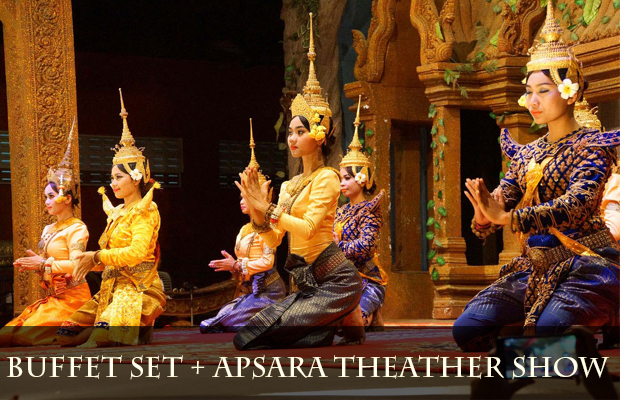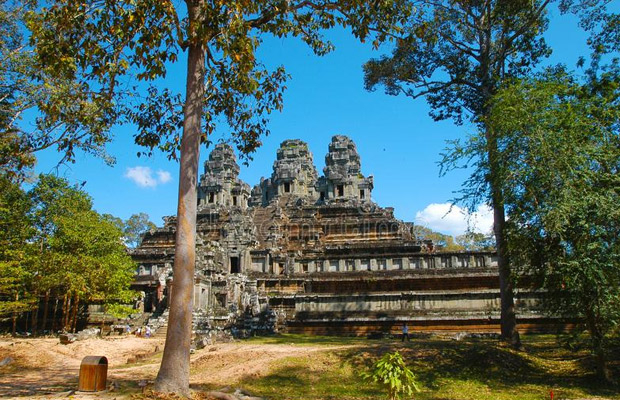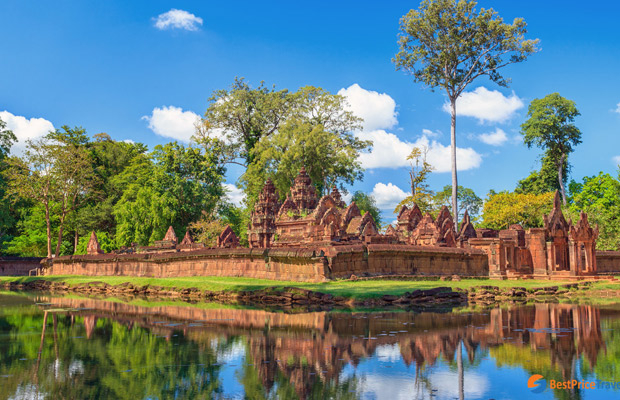Cambodia Temple Guide
Prasat Top (West)
Small, ruined towers standing in an quiet section of Angkor Thom. Inscriptions indicate that the site was used as early as the 9th century, but the present structure is post Angkorian. The materials from the 10th and 11th were reused for the current structure which was probably assembled in the late 13th century. The few carvings that still exist are Buddhist some dating as late as the 17th century.
Over the course of this period the laterite platform was refaced with sandstone, the existent sanctuary reconstructed using 10th-century decorative elements (pink sandstone lintels and columns). Two additional towers were erected, one to the north and the other to the south of what then became the central structure. The ensemble was abundantly sculpted with Buddhist imagery.
Of particular note are the standing Buddhas still somewhat visible on the collapsed facades of the northern tower. Other sculpture, primarily on architectural elements from the three towers, has been arranged by maintenance teams around the perimeter of the temple. The sandstone platform extending in front of the central tower, along with the statue pedestal built at its western end and scattered rooftile fragments, are all that remain of the Buddhist worship hall (vihear) once standing here, its wooden superstructure having long since perished.
As the fundamental ritual act in the appropriation of this ancient site for Theravada Buddhism in the centuries following the transfer of the capital from Angkor, the temple's sacred terrain was delimited at each of the eight cardinal and intercardinal points by double border stones (seima); though partially buried today, some of these leaf-shaped sculptures can still be seen in their original positions.
Western Prasat Top has a counterpart in Eastern Prasat Top that is found near the road to the Victory Gate. This monument, however, was not Buddhist but rather the last Brahmanic temple constructed by Jayavarman VIII in honour of a high-ranking priest and his mother.
